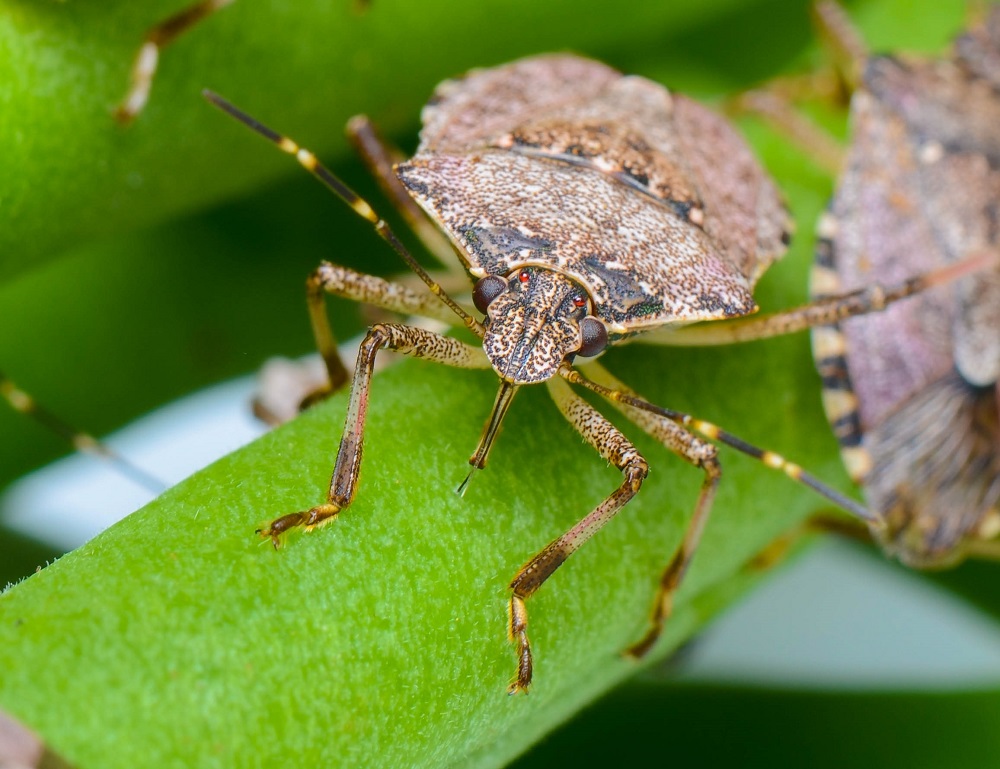
Scientists fear that extreme climate change could ‘more than double’ areas suitable for the devastating fruit and nut pest – the brown marmorated stink bug (Halyomorpha halys) – which is already posing a significant risk to crops in Europe, North America and East Asia where it originates.
The news comes as The Guardian newspaper recently reported how scientists fear the brown marmorated stink bug has spread through eight cities in Turkey, mainly across the Black Sea region, putting around 70% of the world’s hazelnut supply at risk. Elsewhere, the pest in 2016 was responsible for causing $60m worth of damage to Georgia’s hazelnut (a third of its crop) and in 2010, $37m worth of apples were destroyed in parts of the USA.
Dr Tim Haye, CABI’s expert on the pest, is part of a team of researchers who have utilised a modified version of the bioclimatic model package CLIMEX, to predict that 40–60% of Switzerland may be suitable for H. halys long-term survival by the end of the century with the result being a significant threat to the country’s fruit and nut crops. The research is outlined in the International Journal of Biometeorology.
Validation of the CLIMEX model, using observational records collected in a citizen science initiative between 2004 and 2019 revealed that more than 15 years after its accidental introduction, H. halys has colonised nearly all bioclimatic suitable areas in Switzerland and there is limited potential for range expansion into new areas under present climate conditions.
Simulations with climate change scenarios suggest an extensive range expansion into higher altitudes, an increase in generations per year, an earlier start of H. halys activity in spring and a prolonged period for nymphs to complete development in autumn.
The scientists fear that a permanent shift from one to two generations per year and the associated population growth of H. halys may also result in increasing crop damages in Switzerland – particularly in the north-western part of Switzerland and higher altitudes of the valleys in the south.
Estimated climate suitability of H. halys in Switzerland under future climate scenarios, the scientists say, suggests an extensive range expansion into higher altitudes of mountain regions (Alpine valleys, Swiss Jura Mountains) that are currently too cold for establishment.
Their results are in line with the projection that the global potential range of H. halys will expand pole wards and contract from its (warmer) southern range limits under future climate scenarios.
Dr Haye said, “Agricultural losses from insect pests are estimated up to 20-50% and are projected to increase under future climatic conditions. Indeed, there is strong evidence that climate change is already modifying species geographical range, phenology, voltinism and interactions.
“Besides a shift in the distribution and phenology of native pest species, it is evident that the number of non-native species will increase and that climate change will promote their establishment.
“The north-western part of Switzerland could become completely suitable for H. halys. Southwards, the projected range expansion would reach the foothills of the Alps, and higher latitudes in the alpine valleys could become suitable under future climate conditions.
“Monitoring the spread and population development in the north-western part of Switzerland and higher altitudes of the valleys in the south are recommended to protect threatened crops in a timely manner, using a variety of practices such as exclusion netting, bagging fruits, chemical or biological control.”
As part the scientists’ recommendations to mitigate the impact of the brown marmorated stink bug, the Asian samurai wasp, Trissolcus japonicus (Hymenoptera: Scelinoidae), has been identified as the most promising classical biological control agent in Asia and adventive populations were recently found in the Switzerland and Italy.
Dr Haye added, “Similar to the current study, evaluating the bioclimatic suitability of T. japonicus, using the CLIMEX model of Avila and Charles (2018) and fine-scale climate data from Switzerland, could help to project the performance of the biological agent and identify optimal areas for its potential application.”
Additional information
Main image: The brown marmorated stink bug (Credit: Tim Haye).
Full paper reference
Stoeckli, S., Felber, R. & Haye, T. ‘Current distribution and voltinism of the brown marmorated stink bug, Halyomorpha halys, in Switzerland and its response to climate change using a high-resolution CLIMEX model.’ Int J Biometeorol (2020). DOI: 10.1007/s00484-020-01992-z
The paper can be read open access here: https://link.springer.com/article/10.1007/s00484-020-01992-z#citeas
Acknowledgements
Open access funding provided by Research Institute of Organic Agriculture. This work was funded by the Federal Office for Agriculture FOAG (Grant No. 627000612). The work by CABI was conducted with core financial support from CABI’s member countries (see http://www.cabi.org/about-cabi/who-we-work-with/key-donors/). We would like Prof. Darren Kriticos very much for his cooperation and adaptation of the CLIMEX model.
Read more
CABI supports first release in Switzerland of natural enemy for the brown marmorated stink bug
CABI shares expertise on brown marmorated stink bug which threatens 70% of world’s hazelnut supply
The search for an alternative to pesticides for the Stink Bug
Related News & Blogs
Biological control in action: Zambia’s field days on fighting fall armyworm
Experts from CABI recently held two field days and an expo in Zambia, showcasing innovative approaches to pest management to 584 farmers, agro-dealers and other stakeholders to help raise awareness of approaches to tackle the invasive fall armyworm (Sp…
11 June 2025




